Training your dog at home? You’ll need some **must-have gear** to make this **easier** for you and more **comfortable** for your pup.
Investing in the right equipment can make training your dog, at home a fun and enjoyable process for both you and your pup.
Not only will your v necessary to be polite and well-behaved, but training is a great way to build a quality trusting relationship with your dog.
When done properly, training gives you an easy way to communicate with your dog. It gives them skills to be functional members of your family and also helps you keep them safe and out of harm’s way.
With all of that said, having the right tools to help your dog learn everything they need to be safe and sound, is a small investment, towards a lifetime of happiness.
In this article we’ll give you our recommendations for six, essential items that you need to have before you train your pup, and why you need them.
Durable Leash
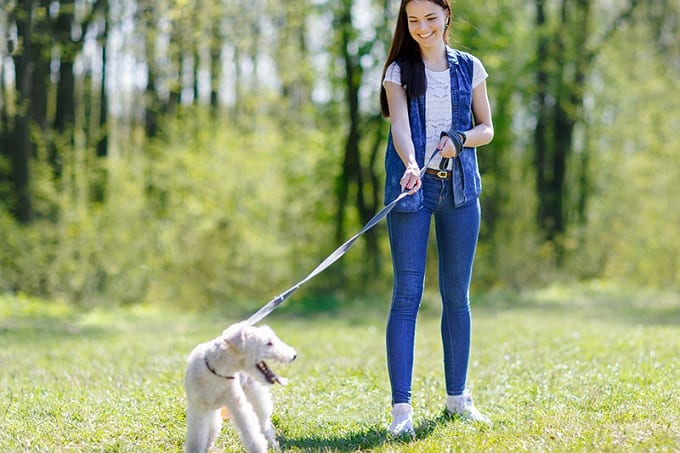
Let’s start with this basic. Every dog owner needs a durable leash.
This tool is helpful for beyond training but is a definite essential training supply. Your training leash should be no more than 6 feet in length.
The ideal training leash will allow you to control your dog with a loose arm. For small dogs, you may need a slightly longer leash, for larger dogs, you may want to have a shorter, 4-foot leash.
Being able to control your dog without tensing your arm or having to reach will let your dog know that you are comfortable and in control.
Being tense or having to stretch will send a signal to your dog that you aren’t comfortable, and they will not be relaxed during training.
For the most success in training, both you and your dog need to be relaxed and comfortable.
This will keep open lines of communication between you and your pup and will help reduce frustration when things get challenging.
Harness
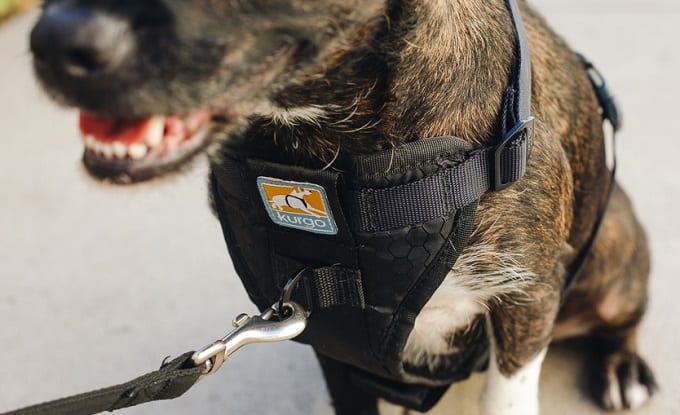
Why not a collar you might be asking. Well, every dog needs a collar.
They are an important piece of gear for every dog. They are essential for holding vaccination tags, and identification tags.
They can even give you a quick place to grab if your pup is in danger. However, a collar isn’t a good training tool.
Once upon a time, collars were the standard for training dogs.
However, as we learn more about dog behavior and anatomy, we know that collars can actually be harmful to some dogs when used as a connection point for a leash.
Dogs that pull hard or have a habit of backing out of collars can be injured by their collar.
The alternative to the collar is a harness with a front lead point. Harnesses give a secure attachment to your dog.
Dogs that are prone to slipping from collars aren’t as apt to sneak out of a harness, and those strong pullers have more support from their chest and legs, so there’s less risk of a neck injury.
A front lead point will cause your dog to turn when it pulls. Dogs don’t like to turn into themselves, so creating a harmless deterrent for pulling makes training for both pup and human, easier.
Remember, collars and harnesses are not meant to be worn all the time, but when your dog is out and about, make sure that they have both a safety harness to connect their leash to and their collar with all of their identification tags.
This way, you have peace of mind that even if your dog sneaks away, it will be easier to get back home.
Clicker
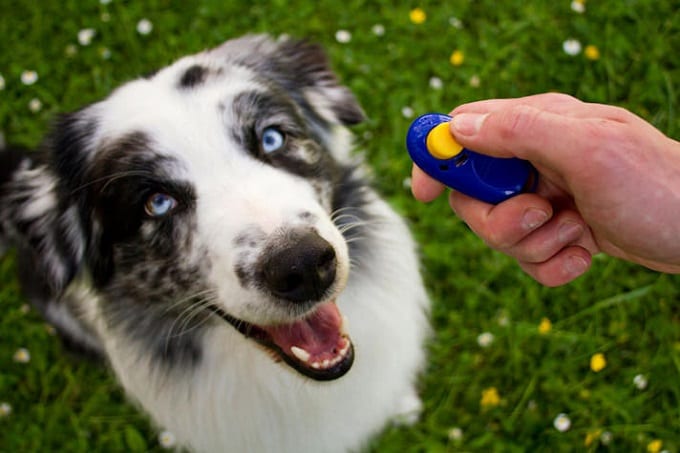
A clicker, hand in hand with treats is essential for helping your dog define when behavior is correct.
Of all of the items on this list, the clicker is one that you don’t need to spend a ton of money on.
Most clickers found at your local pet supply store are just a few dollars, so they are a very affordable and accessible training tool.
If you’ve not used a clicker for training or if you are a new dog owner, you will likely want to do some research on how to properly use a clicker.
If done wrong, you can end up rewarding your pup for the wrong behavior, which makes all of your work seem futile.
However, when done correctly, clicker training can create a great, non-verbal method of communication with your dog.
And the icing on the cake is that when combined with treats, you can eventually skip the treat, and just “reward” your dog with a simple click.
This saves you money and keeps your dog’s waistline in check.
Training Treats
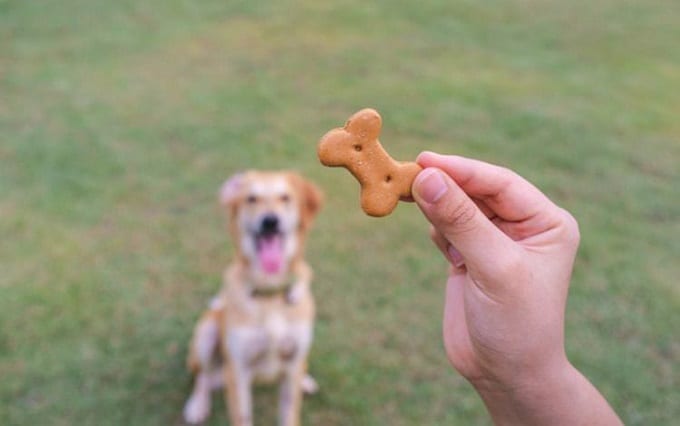
There are tons of training treats on the market.
These tasty, tiny bits of deliciousness will inspire your dog to work hard. Most dogs are highly food motivated so using food is a great way to reward your pup for doing something good.
Many dog trainers will recommend that you have treated of varying “value”.
By value, we mean that treats with high value are exceptionally tasty and are used to get your dog to try new skills or reward them for accomplishing something difficult.
Lower value treats are used to reward basic behaviors or to reward a skill that is very basic and that your dog has already mastered.
High-value treats don’t have to be from your pet supply store. Many trainers recommend things like cheese, lunch meat, or even hot dogs as high-value treats.
These treats can be purchased fairly inexpensively at your grocery store.
Training Belt
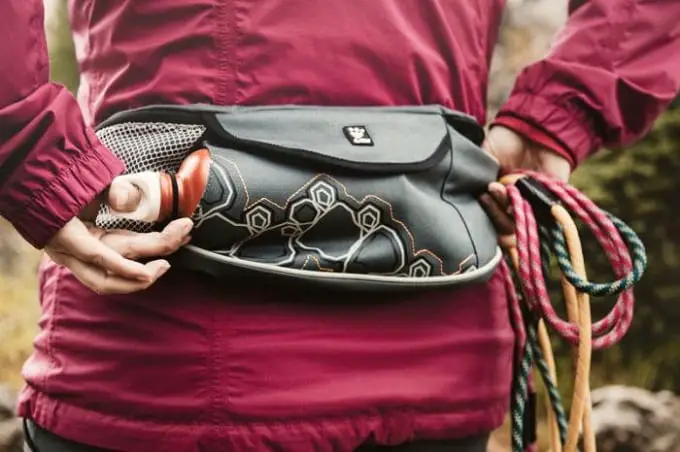
You’re going to want something to hold all of those tasty treats in, and if you are going to train somewhere other than your house, you are going to want to carry poop bags, your phone, keys, and other essentials.
A training belt with a teat pouch is the perfect answer to all of your training equipment needs.
Sure, you can put your dog treats in your pocket, but you’ll soon learn that your pocket isn’t as accessible as you want it to be, and eventually, your pants will end up smelling more like dog treats than you actually want them to.
A good training belt will have a pocket to carry dog treats that has a larger opening than your pant pocket.
This will allow you to easily grab a treat without fumbling. If you can’t quickly grab treats, you may inadvertently end up rewarding behavior you don’t want to encourage.
Some training belts even come with pockets for you to carry your keys, phone, poop bags, and credit cards.
These handy extras will allow you to take your dog to places other than your house to practice their skills.
Good Reference Material
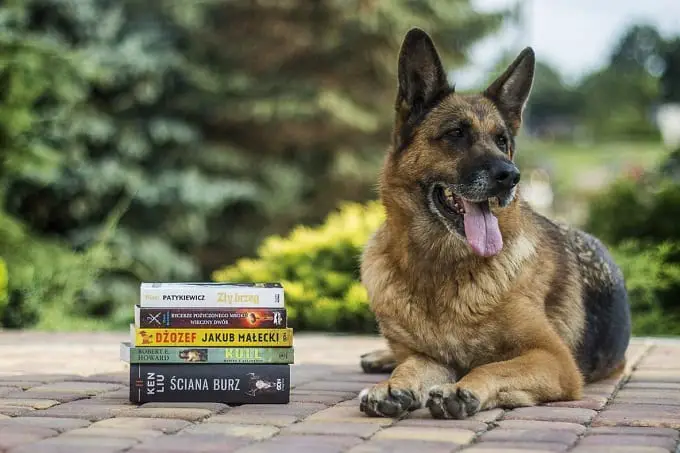
There is no reason to fumble through dog training on your own.
There are tons of great resources available on the internet, at bookstores or in your local library.
If you aren’t sure where to start, find a training reference that is simple to follow and encourages positive reinforcement training.
If you aren’t big on “how-to” books, there are tons of great video resources available as well. Our biggest advice about selecting a guide for training is to make sure that the source is reputable.
The last thing you want is to train your dog to behave the wrong way. Do your research and don’t settle for just one option.
You may find tricks and techniques in a variety of references that fit well for you and your pup.
BONUS
We call this one a bonus because it isn’t essential, and using one is a matter of preference.
Many dog owners find it helpful to invest in a kennel or crate.
Crate training is controversial, but many trainers and experienced dog owners swear that crate training makes for a happier dog and a happier home.
Training your pup to stay in a crate at night or when you aren’t home can reduce things like separation anxiety and damage from boredom.
Some trainers even believe that crate training gives your dog a secure and safe place that they can retreat to when they need “space”.
If you are considering crate training for your dog, make sure you get a kennel that is big enough for your dog to move around, but not so big that the sense of security is lost.
There are tons of benefits to training your dog at home.
If you are willing to put in the time to learn the skills necessary to guide your dog through basic commands, you’ll find that both you and your dog will be happier.
Even better, the time you spend with your dog will help them bond with you, and help develop a strong trusting relationship.
Our list of basic essentials for training is just that, a basic list.
There are tons of other useful training tools on the market, but you don’t need to invest in all the bells and whistles to teach your dog to be a polite member of the family.
If you have thoughts on other essentials, let us know in the comments.
